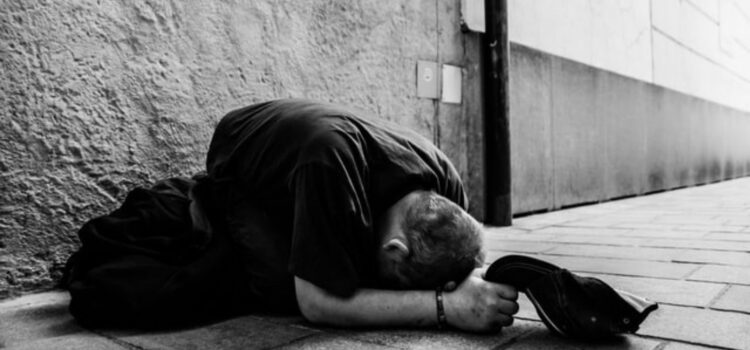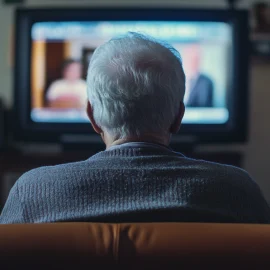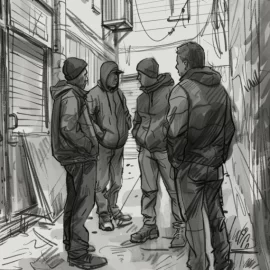

This article is an excerpt from the Shortform book guide to "Maid" by Stephanie Land. Shortform has the world's best summaries and analyses of books you should be reading.
Like this article? Sign up for a free trial here .
What is the cycle of poverty? How did Stephanie Land get stuck in this cycle?
Stephanie Land, the author of the memoir Maid, comes from generations of poverty on both sides of her family. Because of this, and the lack of resources Land needed to break out of poverty, she was stuck in the cycle of poverty that many people are trapped in.
Let’s look at the cycle of poverty from Land’s point of view.
The Cycle of Poverty
What is the cycle of poverty, according to Land? Land has to contend with the cyclical way in which factors interact with each other to exacerbate her poverty. Land and her daughter’s living conditions make Mia sick, which results in Land missing work. Complying with requirements for government aid also causes Land to miss work. And because Land and her daughter are barely surviving, any unforeseen expense or circumstance puts them at risk of homelessness.
Poverty Causes Illness and Injury, Which Causes Missed Work
The apartment where Land and Mia live the longest contains mold, which causes respiratory problems and ear infections for Mia. In turn, taking Mia to the doctor causes Land to miss work. (Although Land’s job makes her sick, too, she works when she’s sick or injured to avoid losing income.)
In addition, Mia frequently contracts illnesses at her daycare. The daycare only calls Land to pick Mia up when Mia is very sick. But when that happens, Land has to miss work as well.
Land’s work causes multiple illnesses and injuries. She injures her back moving furniture and has chronic back pain. Cleaning exacerbates a preexisting condition, causing a pinched nerve down her right arm that prevents her from gripping a sponge. She has to devise elaborate workarounds to scrub surfaces because of her injury. When she gets home at the end of a six-hour day, she can barely hold a plate or a grocery bag. She has lingering sinus infections as a result of her allergies to the pet hair, dust, and mold she encounters cleaning houses.
Even if Land tries to break the cycle of poverty by seeing a doctor, it’s too expensive. Although Mia is covered by Medicaid, Land makes too much money to receive it herself. Without health insurance, she can’t afford to see a doctor about her injuries, sickness, and pain, so she simply lives with them. She tries to rely on over-the-counter remedies, but they are expensive, so she has to ration them.
In order to work, Land needs to leave Mia at daycare, where Mia also gets sick constantly. Land receives a child care assistance grant that pays for half a day of daycare.
Complying With Requirements for Government Aid Causes Missed Work
Land often has to take time off work—and forfeit earned income—to attend appointments with her government caseworkers or comply with other requirements to continue receiving government aid. She often felt like these requirements were holding her back from escaping the cycle of poverty.
Land is required to take various classes that teach very basic, common-sense concepts in order to qualify for government housing assistance. For example, to receive a grant for heating fuel, she has to take a class on how to use energy efficiently. The class essentially just teaches participants to turn the lights off. She feels the government assumes that people who need aid are uneducated and unintelligent.
Unforeseen Circumstances Can Result in Homelessness
Land has to carefully track her income and expenses at all times to make sure she has enough to get through the month. She can’t buy anything without doing a mental calculation of how much money she has and which bills are about to come due. Any unforeseen expense, such as a small repair on her aging car, can send her spiraling back into the cycle of poverty. Her precarious life can’t tolerate minor unpredictability, much less major accidents.
For example, when Land pulls over on the freeway to retrieve Mia’s doll and their car is rear-ended, the tragedy of the accident is compounded due to Land’s poverty. Land loses her car—her primary method of survival. She also has to worry about the expense of taking an ambulance to the hospital. Although she’s still traumatized by the accident, she has to return to driving immediately in order to earn a living.

———End of Preview———
Like what you just read? Read the rest of the world's best book summary and analysis of Stephanie Land's "Maid" at Shortform .
Here's what you'll find in our full Maid summary :
- The true story of a single mother who struggled to make ends meet as a housekeeper
- A social commentary on the American “pull yourself up by your bootstraps” mentality
- Background information, research, and statistics on the key themes in the memoir






